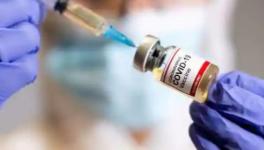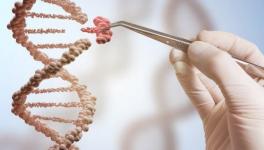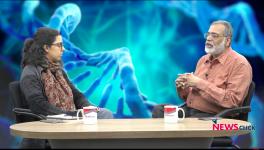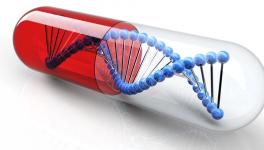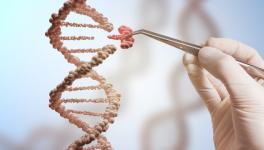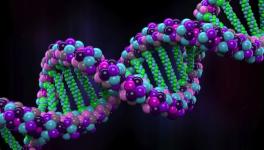DNA-tweaking Using Gene Therapy Lowered Cholesterol, Safety Concerns Remain: Study
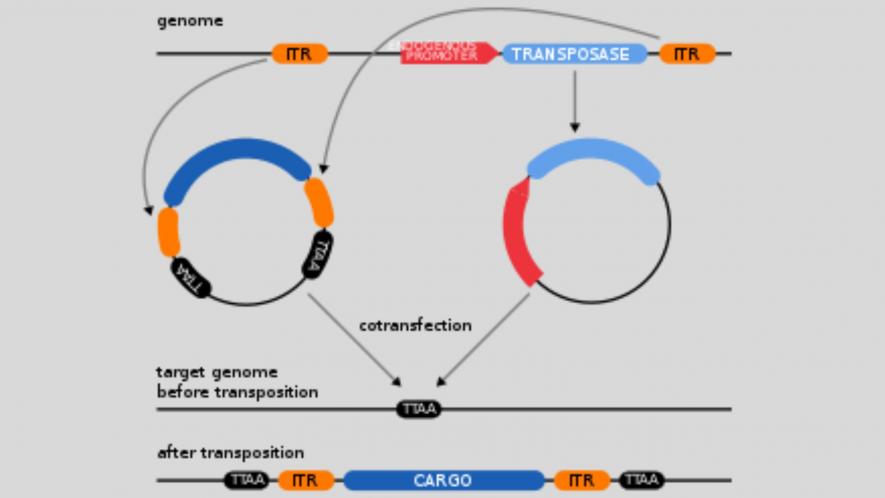
Image Courtesy: Wikimedia Commons
By switching off a particular gene in the liver, a gene editing technique has been shown to put bad cholesterol levels in control effectively. In this new regime of gene therapy, named the VERVE-101, the gene PCSK9 in the liver was permanently deactivated. This particular gene controls the level of the harmful cholesterol LDL (Low Density Lipoprotein), which is a key contributor to heart diseases.
US-based biotechnology firm Verve Therapeutics, which developed the treatment, reported that VERVE-101 has a one-time injection and could reduce the LDL amount by 55% amongst those who participated in the trial.
From the trial results, it may be envisioned that a new kind of therapy has come into place to treat the cholesterol problem and that too, with a sustained result. This treatment, as some experts see, can open up a new paradigm for treating coronary artery disease. Nevertheless, this therapy is not out of criticism regarding its safety concerns, which were produced in the trial report where two serious adverse events and a death were observed.
In an article by Miryam Naddaf published in Nature about VERVE-101, Ritu Thamman, a cardiologist at the University of Pittsburgh, Pennsylvania, was quoted to have said, “It’s a tremendous scientific milestone because it’s the first time that they’ve been able to show that a single base pair of DNA editing, using CRISPR technology in humans, has had a clinical effect. From the clinical point of view, it has the potential to open a new way of treating coronary artery disease that could involve people receiving a ‘one and done’ treatment rather than taking daily pills.”
Verve Therapeutics declared the findings at a meeting of the American Heart Association in Philadelphia on November 12, the interim results of a phase 1b trial conducted in the United Kingdom and New Zealand. The company will continue the trial for next year in the US as they obtained approval from the Food and Drug Administration of the US for enrolling new participants.
VERVE-101: Playing with Genome and the Science Behind
The new therapy used CRISPR-Cas9 machinery, enabling it to precisely edit a targeted gene in the desired region. CRISPR-Cas9 is a gene-editing technology with two components—one can direct the machinery to the targeted gene, and the other, the Cas9, can cut the DNA molecule at the desired place.
Take, as an analogue, the example of a scissor and a rope and imagine that you want to cut the rope at a particular position. The scissor is the CRISPR-Cas9 machinery, and the rope is the gene or DNA molecule.
Now, let us look at the science that allows scientists to change the DNA for editing a particular gene. The DNA (the RNA in some other organisms) is the genetic basis of species. The DNA has the codes for producing proteins called genes. In other words, genes are those portions of the DNA molecule that guide the production of proteins with their codes. The codes in the DNA are represented by four letters, A, T, C and G, which are called the bases. Remember, this is the simplest possible portrayal of genetics, used to make understanding easier. The real scenario is much more complicated as scientists spend decades deciphering even a small point of the complicated story.
The CRISPR-Cas9 machinery, as used in VERVE-101, is base-editing of the DNA, where single bases (nucleotide) can be changed without breaking the double strands of the DNA molecule, which is used by usual gene editing approaches. CRISPR also had a similar function of severing both strands of the DNA, but the base editing is a twist to the traditional CRISPR and was invented by David Liu’s lab at Harvard University.
How the Cholesterol Level Went Down by Tweaking the Gene
Using the base editing technique, the PCSK9 gene was permanently switched off and in this way, the proteins that the gene coded for were also affected. These proteins are enzymes and usually prompt receptors for LDL cholesterol (The LDL receptors are proteins on the outer surface of cells in the liver and elsewhere that enable the cholesterol to enter the cells). With PCSK9 getting switched off, the production of the LDL receptor proteins is also hampered, and the LDL levels have also gone down.
The treatment aims at protecting from heart attacks and strokes.
“If the blood LDL-cholesterol is very low lifelong, it’s very hard to get a heart attack,” Sekar Kathiresan, CEO of Verve and a co-founder, was quoted as commenting in Naddaf’s article.
VERVE-101 was injected in the participants that contained the base editors packed in nanoparticles. After injection, the liver cells take up the nanoparticles, and once inside, the base editors go to the nucleus of the cell (remember, the DNA is packed in the nucleus of the cell). Inside the nucleus, the base editors make an edition of a single letter (amongst the four—A, T, C or G), swapping one letter with another. This makes the PCSK9 gene go into permanent switch-off mode.
The clinical trial was experimented with 10 people having an inherited disease called the HeFH (heterozygous familial hypercholesterolemia), which causes a high level of LDL from childhood. After 28 days of receiving VERVE-101, the participants’ LDL level was found to drop by 55% and the PCSK9 gene by 84%.
The Caveats: Safety Concerns
The treatment also showed side effects like brief flu-like symptoms, fevers and headaches. However, two major events in the trial have raised safety concerns in the treatment. Two of the ten participants were found to have developed cardiovascular events, with the death of one due to a heart attack five weeks after VERVE-101 was received. The other had a heart attack just after a day of the treatment.
“From a scientific standpoint, there is still a lot going on in addressing some of the key aspects of this technology. The delivery by nanoparticles is still in early stages in terms of tolerability,” commented Luigi Naldini, a gene therapist at the Vita-Salute San Raffaele University in Milan, Italy. Naldini added that there could be other unknown long-term effects of the gene editing.
Karol Watson, a cardiologist at the University of California, Los Angeles, present at the November 12 press briefing announcing the findings, said in his comments—“This is a gene editing study — you are changing the genome forever. Safety is going to be of the utmost importance, especially because there are currently safe and efficacious strategies available for lipid lowering.”
The US FDA mandates following of the trial participants for 14 years in case of gene-editing therapies, which Verve must have to follow, experts opined.
Get the latest reports & analysis with people's perspective on Protests, movements & deep analytical videos, discussions of the current affairs in your Telegram app. Subscribe to NewsClick's Telegram channel & get Real-Time updates on stories, as they get published on our website.









